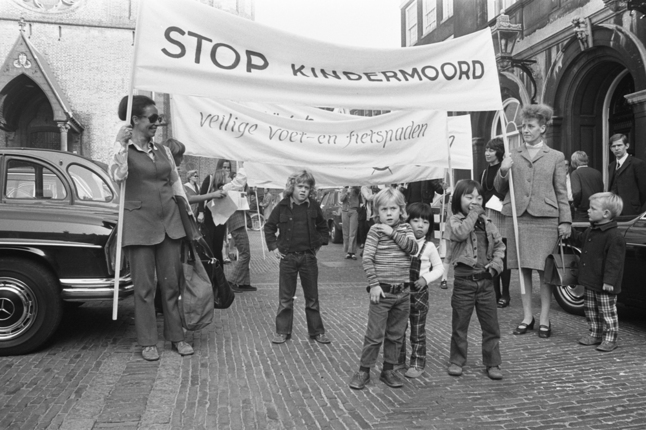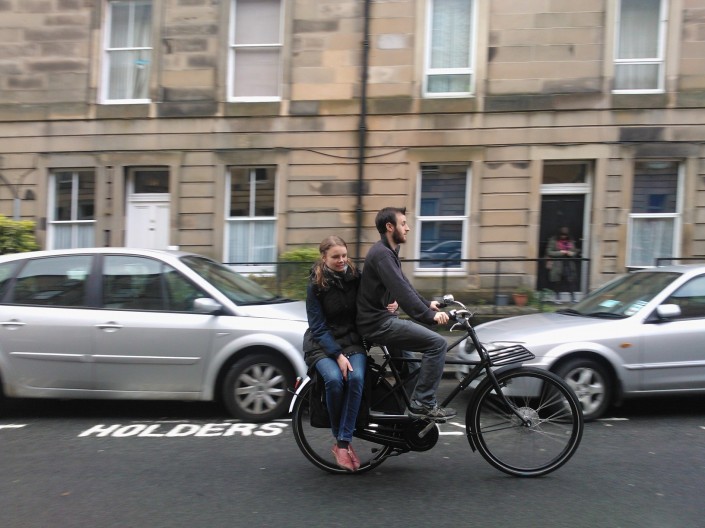transport
100 miles of Dutch-Style Bike Lanes planned for Bristol
Link Posted on Updated on
100 Miles of Dutch-Style Bike Lanes for Bristol
In a bid to save lives and reduce the fear factor preventing people from taking to two wheels, Bristol is to announce radical new proposals which will make it Britain’s first city to adopt a truly Dutch-style network of cycle lanes.
Already the UK’s top cycling city with an estimated 16,000 regular cyclists, the 100 miles of cycle paths are due to be operational as soon as Spring 2014!
In contrast to this fantastic news, the national picture is comparatively bleak. With cycle uptake ever on the increase, the number of cyclists killed or injured on Britain’s roads is at its highest for three years: 118 deaths and 3,222 injuries recorded in 2012. Although these figures represent regrettable injuries and tragic loss of life, statistics like these are what motivated the Dutch to unite as a nation and demand the changes that led to their precedent-setting infrastructure.


In other (related) news, a new peer-reviewed study has revealed that financial investment in cycling infrastructure can increase the share of journeys taken by bike. This might seem like the predictable answer to another do-bears-poop-in-the-woods sort of question, but it’s not always cut-and-dried that spending to achieve a goal actually works. Look at roadbuilding, for instance: billions of pounds are pumped into constructing new roads in order to reduce congestion, yet congestion keeps on increasing.
Ridiculous, unnecessary, and obvious as it seems, it’s still good press. Click here for the Guardian article.

Related articles
- Dutch-style bike lanes set for roll-out in Bristol – Britain’s cycling capital (independent.co.uk)
- City’s ‘Dutch-style’ bike lane plans (bbc.co.uk)
- Move over Amsterdam, the London cycling revolution is in top gear (standard.co.uk)
- New Denver Bike Lanes Not Only Safer, Good For Business (denver.cbslocal.com)
Passengers on bikes – first UK test
A few days ago my girlfriend needed to get to the other side of town. She needed to get there in about 20 minutes, and for one reason or another she couldn’t take her own bike.
“What ever shall we do?” she despaired, half-fainting as the back of her hand met her forehead.
“Fear not pumpkin,” I replied heroically, rising from my seat and gesturing towards my bike, “for I can give you a lift”.
Having lived in Amsterdam for the past year, this solution was both obvious and intuitive to me. Giving bicycle lifts was STANDARD PRACTICE in the Netherlands, and it is such a common occurrence as to be an almost mundane part of everyday life for the typical Dutchman.
Look, it’s not even a thing:


I offered to give my girlfriend a lift because I love giving lifts to people. Even though, as the ‘driver’, you are taking responsibility for your passenger’s welfare, it’s still a really fun way to get around once you’ve got the hang of it. And it’s not particularly difficult, see:

At any rate, giving her a lift would provide an opportunity to test out my hub gears and roller brakes with a ‘loaded’ bike.* So we saddled up and hit the road.
We’d done this a million times in Holland, and were familiar with the dynamics of travelling with a 2:1 ratio of humans to bikes. That said, and in spite of the fact that we were in a hurry, my girlfriend is kinda important to me, and so I was cycling with all the heightened awareness and care of a new parent. In addition to this, if ever I do anything even vaguely dangerous on the bike I am met with the alarm call of “Egg on board! Egg on board!” because a few years ago I referred to her a ‘precious egg’ and she reasoned that “we wouldn’t want to endanger an egg of such rare and exquisite value by cycling dangerously”. Oh, no no.
But alas, I digress.
The bike itself performed admirably. The sturdy steel frame held everything together and felt just as solid and responsive as usual (most bikes tend to feel increasing like a wet noodle as you add weight to them). Even Edinburgh’s hills were no match for the 8-speed Nexus hub, and although I will admit that it did require a substantial and sustained effort to get us up some of the bigger hills, I would also add that this was only because we were in a hurry – had we been out for a simple joy-ride on a sunny afternoon then I would have dropped it into first gear and just pootled along a walking pace. The Shimano roller and coaster brakes also performed superbly; even when we were going downhill there didn’t seem to be any loss of power due to overheating (a common problem with older versions).
The last thing that I want to mention about our journey is that although we did turn a surprising number of heads (two people on a bike – is it really so novel?), I can happily report that people seemed pretty positive about us. For the most part we were seen for what we were: just a guy giving a girl a lift – albeit in a rather ‘eccentric’ fashion by UK standards. Quite a few people even thought we were cute, and (according to Kristina) one girl quite openly chastised her boyfriend for never doing anything so romantic (sorry dude). Others – a minority – looked on with disapproval, but the unfamiliar is often greeted with suspicion and distrust, and I’m sure that they’ll catch on eventually.

All things considered it was a great experience. Of course, it would have been better if we’d had segregated cycle paths, better quality road surfaces, and more considerate drivers, but I will address those issues elsewhere. The point is, we did it: we brought a little bit of Dutch cycling culture to the streets of Edinburgh and it was fine. We’ll keep it up, and I’ll keep you posted.
* please don’t tell my girlfriend that I referred to her as a ‘load’. She’s really very svelte.
Related articles
- “I want to ride my bicycle, I want to ride my bike…..” (letsridebirmingham.wordpress.com)
- Dutch City Hailed as Most Bike-Friendly (outsideonline.com)
True utility – Dutch style
Image Posted on Updated on

I don’t have a car. I don’t even have a driving licence. It might seem crazy to some, but I don’t feel deprived because of either of these things. I’ve been using bikes as my primary means of transportation for the last 13 years, and for longer journeys I just put my bike on the train. It really is just that simple.
The ‘pastoorsfiets’ (or ‘priest bike’) in the picture is my pride and joy, and also my reason for starting this blog. I spent most of 2012 living in Amsterdam, and I learned a great deal about how cycling can be a cheap/viable/safe/fun/sustainable transport option for an entire city so long as there is good infrastructure in place, laws to protect cyclists, and a positive attitude towards cycling amongst the population. We typically lack these things in the UK, but in my lifetime I hope to see that change; in fact, I intend to effect that change as much as possible.
Over the coming weeks and months, I would like to share with you all that I have learned about bikes, and how car ownership is largely unnecessary and often a limiting factor on the quality of life for many people living in urban areas. Alongside this aim, I intend to use this blog to talk about Dutch utility bikes, how they are different from what we are used to in the UK, and how they really can replace cars for many people (especially young families).
My ultimate goal is to start a business importing/building Dutch-style utility bikes for a UK market, as I believe that this might be the key ingredient that is currently holding back a real revolution in British cycling. If people are supplied with the right tools to enable them to give up their cars, then maybe the changes will snowball and we can all flourish in the two-wheeled utopia that follows.
To get the ball rolling on this one, I’d like to invite you to take part in a supremely basic poll. In short: what do you think of my proposal? All constructive/supportive advice or critical/brutal opinions will be appreciated.
Related articles
- Social Innovation Requires Action: How the Dutch got their bike lanes. (designandpolicy.wordpress.com)
- Why do so many Dutch people cycle? (cyclingnelly.wordpress.com)
- Why London needs space for people on bikes, not “cyclists”, and how you can make it happen (cyclelove.net)
- Why we need space for cycling (aseasyasridingabike.wordpress.com)
